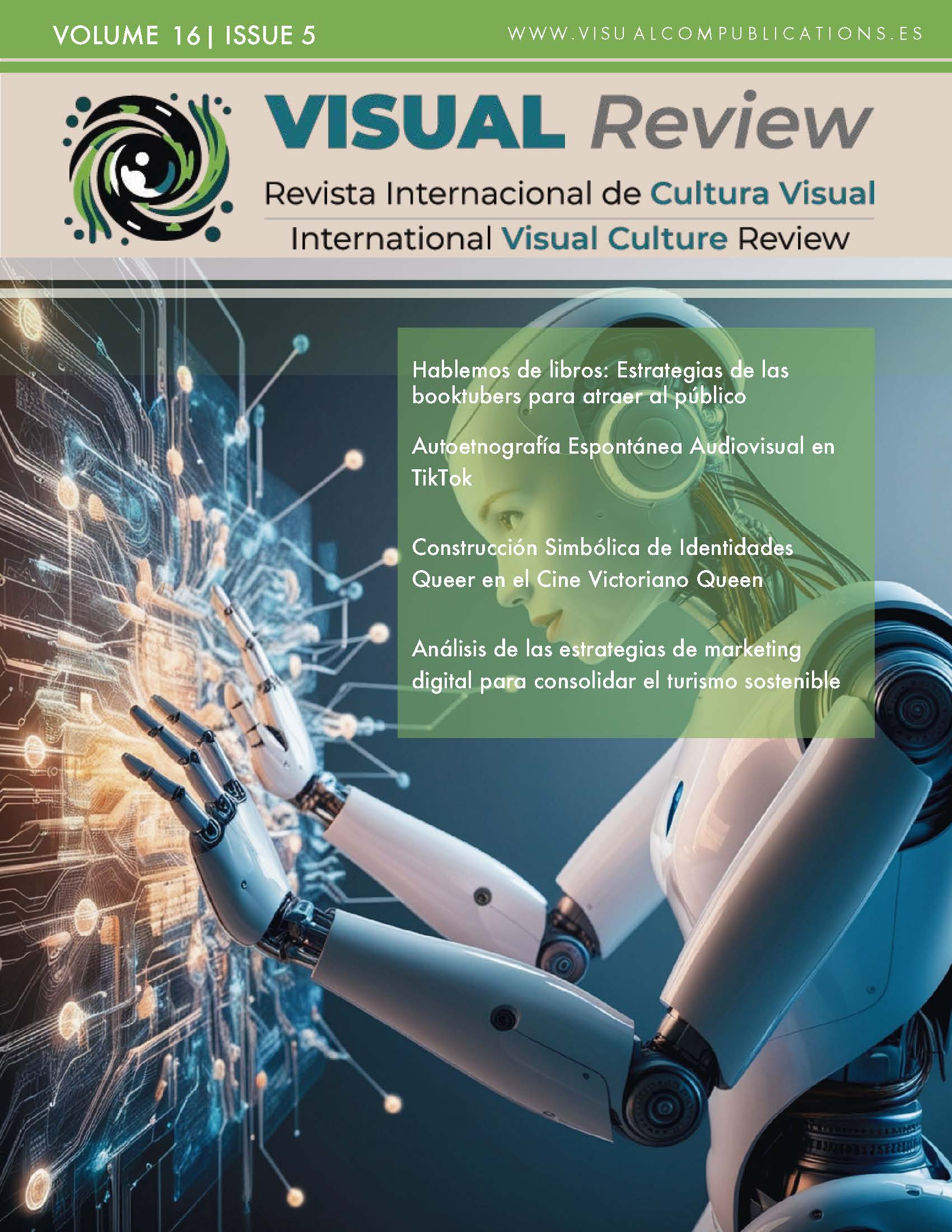Integration of Text Mining and Complex Social Network Analysis for Quantitative Characterization of Discursive Evolution in Artificial Intelligence Through Streaming Platforms
DOI:
https://doi.org/10.62161/revvisual.v16.5288Keywords:
Artificial Intelligence, Discursive Evolution, Text Mining, Social Network Analysis, Streaming PlatformsAbstract
This study provides a quantitative characterization of the discursive evolution in Artificial Intelligence (AI) across streaming platforms (such as YouTube), by integrating text mining and complex social network analysis. Using a comprehensive corpus from leading platforms, natural language processing algorithms were employed to analyze the textual content, identifying patterns, emerging themes, and shifts in discourse about AI. Concurrently, a social network analysis was conducted to examine the interaction structures and the influence of different actors in disseminating information. The findings reveal significant trends in the presentation and perception of AI, highlighting the evolution of specific themes, differences in perception among various groups, and the influence of factors such as technological advancements and global events. This analysis provides a deeper understanding of AI communication and perception in the digital realm, offering valuable insights for academics, communicators, and policymakers in the field of Artificial Intelligence.
Downloads
Global Statistics ℹ️
|
796
Views
|
185
Downloads
|
|
981
Total
|
|
References
Bernstein, R., Osadchy, M., Keren, D., & Schuster, A. (2019). LDA classifier monitoring in distributed streaming systems. Journal of Parallel and Distributed Computing, 123, 156-167. https://doi.org/10.1016/j.jpdc.2018.09.017 DOI: https://doi.org/10.1016/j.jpdc.2018.09.017
Campbell, M., Cosgrove, J. A., Greated, C. A., Jack, S., & Rockliff, D. (2000). Review of LDA and PIV applied to the measurement of sound and acoustic streaming. Optics & Laser Technology, 32(7), 629-639. https://doi.org/10.1016/S0030-3992(00)00091-8 DOI: https://doi.org/10.1016/S0030-3992(00)00091-8
Campis, E. S. (2023). Aplicación del Análisis de Redes Sociales para el estudio de las redes de comunicación en línea: Evidencia empírica de Twitter. EMPIRIA: Revista de Metodología de Ciencias Sociales. https://doi.org/10.5944/empiria.57.2023.36434 DOI: https://doi.org/10.5944/empiria.57.2023.36434
Gonzales, E. P. Z., Gallegos, W. L. A., Gallegos, W. L. A., Toia, A. M. del C., Rivera, R., & Condori, M. L. (2020). Depresión postparto en mujeres víctimas de violencia doméstica en la ciudad de Arequipa. null. https://doi.org/null
Gonzales, J. E., Ortega, Á. C., Blanco, R. R., & Diez, E. B. (2023). ANÁLISIS DE SENTIMIENTOS Y EMOCIONES SOBRE GASTRONOMÍA PERUANA USANDO MINERÍA DE TEXTO CON PYTHON. Hatun Yachay Wasi. https://doi.org/10.57107/hyw.v3i1.63 DOI: https://doi.org/10.57107/hyw.v3i1.63
Lau, J. H., Lau, J. H., Newman, D. J., Newman, D., Baldwin, T., & Baldwin, T. (2014). Machine Reading Tea Leaves: Automatically Evaluating Topic Coherence and Topic Model Quality. null. https://doi.org/10.3115/v1/e14-1056 DOI: https://doi.org/10.3115/v1/E14-1056
Lee, S. (2023). An Analysis on Major Issues of Medical Information on YouTube Platform Using LDA Topic Modeling. The Journal of the Korea Contents Association. https://doi.org/10.5392/jkca.2023.23.08.198 DOI: https://doi.org/10.5392/JKCA.2023.23.08.198
Li, D., Bi, Z., Han, X., Qu, Z., & Lyu, C. (2024). Extracting key topics from massive COVID-19 information on social networks: An integrated deep learning and LDA framework. High-Confidence Computing, 100213. https://doi.org/10.1016/j.hcc.2024.100213 DOI: https://doi.org/10.1016/j.hcc.2024.100213
Li, M., Lu, M., Akram, U., & Cheng, S. (2024). Understanding how customer social capital accumulation in brand communities: A gamification affordance perspective. Journal of Retailing and Consumer Services, 78, 103761. https://doi.org/10.1016/j.jretconser.2024.103761 DOI: https://doi.org/10.1016/j.jretconser.2024.103761
Morchid, M., Morchid, M., Linarès, G., & Linarès, G. (2013). A LDA-based method for automatic tagging of Youtube videos. Workshop on Image Analysis for Multimedia Interactive Services. https://doi.org/10.1109/wiamis.2013.6616126 DOI: https://doi.org/10.1109/WIAMIS.2013.6616126
Srikumar, N., & Srikumar, N. (2021). Feature Augmentation for Improved Topic Modeling of Youtube Lecture Videos using Latent Dirichlet Allocation. null. https://doi.org/10.21427/4ey6-qg08
Torres, V., & Moreta, O. E. (2023). Detección de ansiedad mediante minería de texto en la era de redes sociales: Revisión bibliográfica. Ciencia Huasteca Boletín Científico de la Escuela Superior de Huejutla. https://doi.org/10.29057/esh.v11i22.10879 DOI: https://doi.org/10.29057/esh.v11i22.10879
Torres-Cruz, F., & Mamani, Y. J. Y. (2022). Técnicas de inteligencia artificial en la valoración de la enseñanza virtual por estudiantes de nivel universitario. HUMAN Review International Humanities Review / Revista Internacional de Humanidades. https://doi.org/10.37467/revhuman.v11.3853 DOI: https://doi.org/10.37467/revhuman.v11.3853
Downloads
Published
How to Cite
Issue
Section
License
Copyright (c) 2024 VISUAL REVIEW. International Visual Culture Review / Revista Internacional de Cultura Visual

This work is licensed under a Creative Commons Attribution-NoDerivatives 4.0 International License.
Those authors who publish in this journal accept the following terms:
-
Authors retain copyright.
-
Authors transfer to the journal the right of first publication. The journal also owns the publishing rights.
-
All published contents are governed by an Attribution-NoDerivatives 4.0 International License.
Access the informative version and legal text of the license. By virtue of this, third parties are allowed to use what is published as long as they mention the authorship of the work and the first publication in this journal. If you transform the material, you may not distribute the modified work. -
Authors may make other independent and additional contractual arrangements for non-exclusive distribution of the version of the article published in this journal (e.g., inclusion in an institutional repository or publication in a book) as long as they clearly indicate that the work was first published in this journal.
- Authors are allowed and recommended to publish their work on the Internet (for example on institutional and personal websites), following the publication of, and referencing the journal, as this could lead to constructive exchanges and a more extensive and quick circulation of published works (see The Effect of Open Access).













